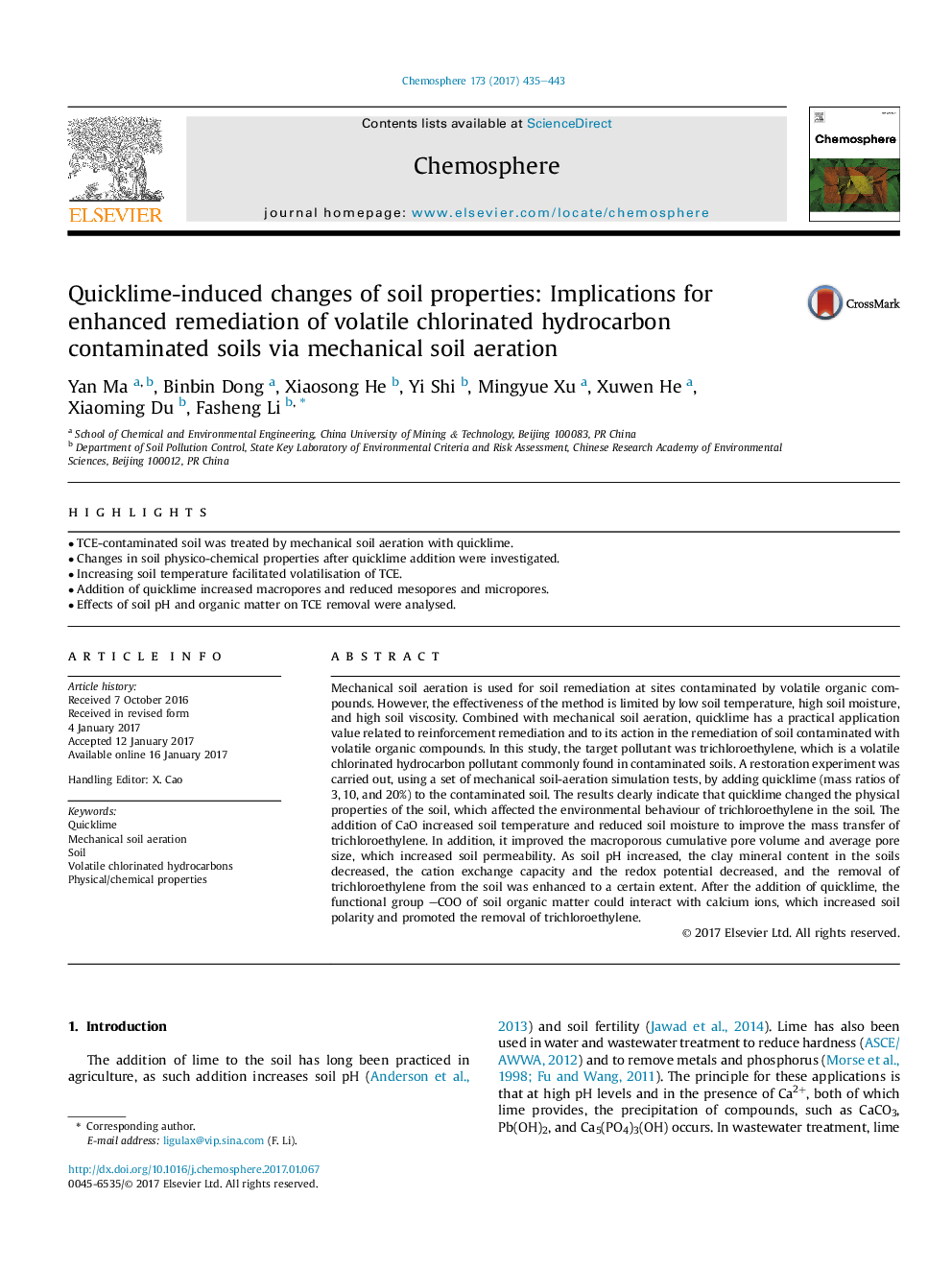| Article ID | Journal | Published Year | Pages | File Type |
|---|---|---|---|---|
| 5747429 | Chemosphere | 2017 | 9 Pages |
Abstract
Mechanical soil aeration is used for soil remediation at sites contaminated by volatile organic compounds. However, the effectiveness of the method is limited by low soil temperature, high soil moisture, and high soil viscosity. Combined with mechanical soil aeration, quicklime has a practical application value related to reinforcement remediation and to its action in the remediation of soil contaminated with volatile organic compounds. In this study, the target pollutant was trichloroethylene, which is a volatile chlorinated hydrocarbon pollutant commonly found in contaminated soils. A restoration experiment was carried out, using a set of mechanical soil-aeration simulation tests, by adding quicklime (mass ratios of 3, 10, and 20%) to the contaminated soil. The results clearly indicate that quicklime changed the physical properties of the soil, which affected the environmental behaviour of trichloroethylene in the soil. The addition of CaO increased soil temperature and reduced soil moisture to improve the mass transfer of trichloroethylene. In addition, it improved the macroporous cumulative pore volume and average pore size, which increased soil permeability. As soil pH increased, the clay mineral content in the soils decreased, the cation exchange capacity and the redox potential decreased, and the removal of trichloroethylene from the soil was enhanced to a certain extent. After the addition of quicklime, the functional group COO of soil organic matter could interact with calcium ions, which increased soil polarity and promoted the removal of trichloroethylene.
Related Topics
Life Sciences
Environmental Science
Environmental Chemistry
Authors
Yan Ma, Binbin Dong, Xiaosong He, Yi Shi, Mingyue Xu, Xuwen He, Xiaoming Du, Fasheng Li,
